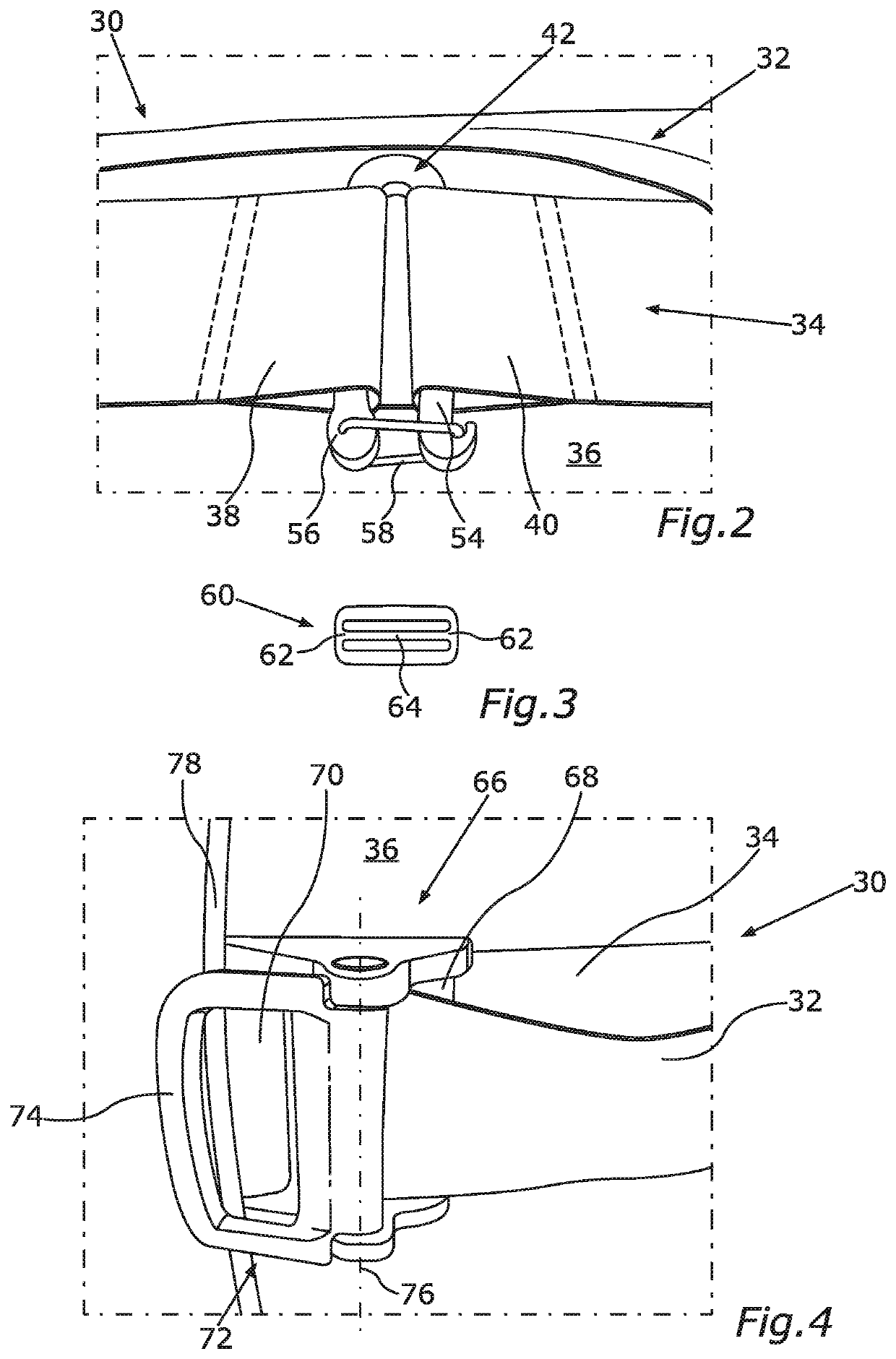Rucksack with continuous back length adjustment
a back length adjustment and rucksack technology, applied in the field of rucksacks, can solve the problems of preventing the upward movement of the yoke plate, the rigid type of the adjustment mechanism, and the back length adjustment, and achieve the effect of improving the adjustability to different hip belt systems and being easy to mov
- Summary
- Abstract
- Description
- Claims
- Application Information
AI Technical Summary
Benefits of technology
Problems solved by technology
Method used
Image
Examples
Embodiment Construction
[0049]FIG. 1 shows a rucksack 10 comprising a first shoulder strap 12 and a second shoulder strap 14. The end sections of the shoulder straps 12, 14 are attached to a middle piece 16. The middle piece 16 is continuously movable along two guide rails 18, 20 that serve as guide elements in a vertical direction 22 of the rucksack 10, i.e. upward or downward. The vertical direction 22 is therefore illustrated in FIG. 1 by a double arrow. The guide rails 18, 20 can be formed in particular from an aluminum alloy.
[0050]The middle piece 16 is also referred to as the central component of the shoulder straps and ensures at the same time that the end sections of the shoulder straps 12, 14 are connected with each other. The middle piece 16 comprises a plate-type base 24 (cf. FIG. 6), which can be provided, for example, by at least one substantially rectangular plate from a plastic such as polyethylene. On this plate-type base 24 are the pads 26, 28 shown in FIG. 1, which lie against the back of...
PUM
 Login to View More
Login to View More Abstract
Description
Claims
Application Information
 Login to View More
Login to View More - R&D
- Intellectual Property
- Life Sciences
- Materials
- Tech Scout
- Unparalleled Data Quality
- Higher Quality Content
- 60% Fewer Hallucinations
Browse by: Latest US Patents, China's latest patents, Technical Efficacy Thesaurus, Application Domain, Technology Topic, Popular Technical Reports.
© 2025 PatSnap. All rights reserved.Legal|Privacy policy|Modern Slavery Act Transparency Statement|Sitemap|About US| Contact US: help@patsnap.com



